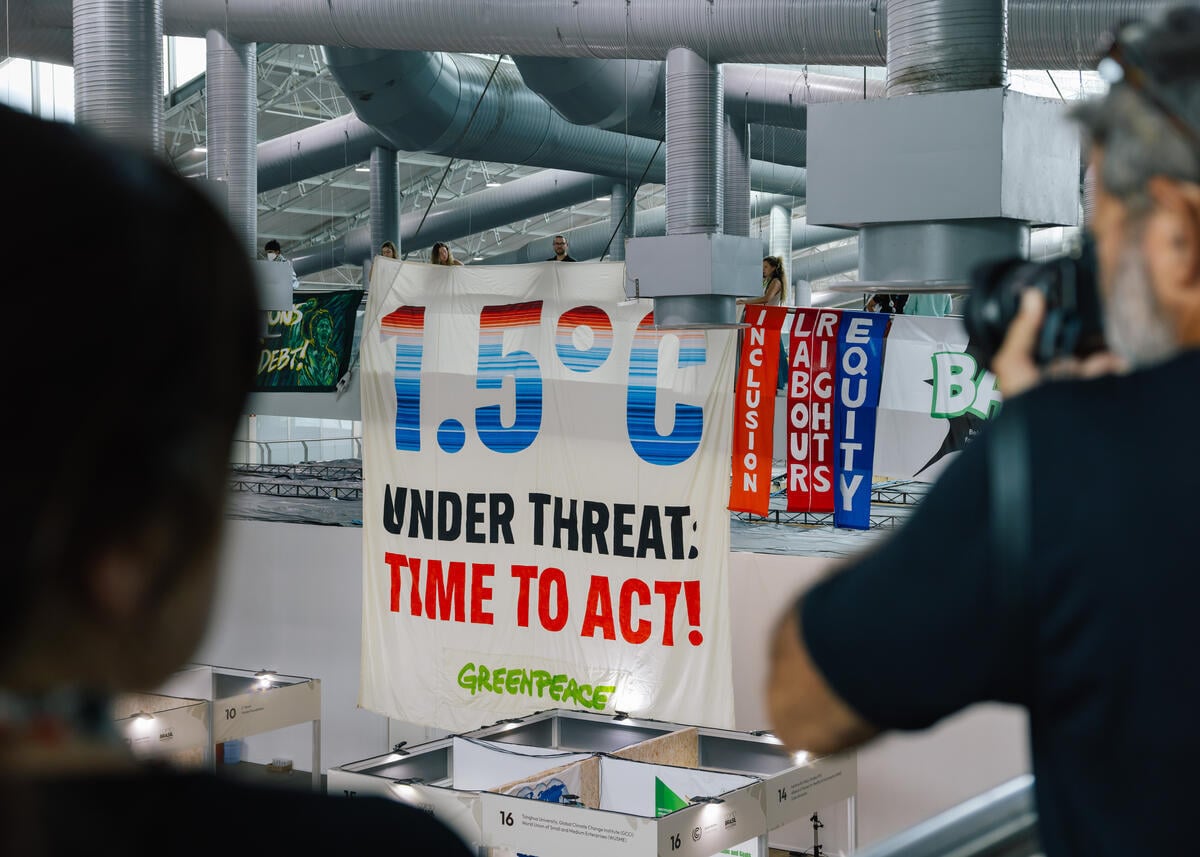At its best, science works slowly, methodically revealing patterns of material, energetic, and biological relationships. Over 2000 years – from about 430 BC when Democritus, the Greek naturalist, proposed indivisible “Atomos”, to 1911 when Ernest Rutherford shot protons at gold foil – humans learned that our physical world arises from tiny atomic structures that bond together to create molecules, which in turn can absorb and emit heat.
Greenhouse Effect: The early years
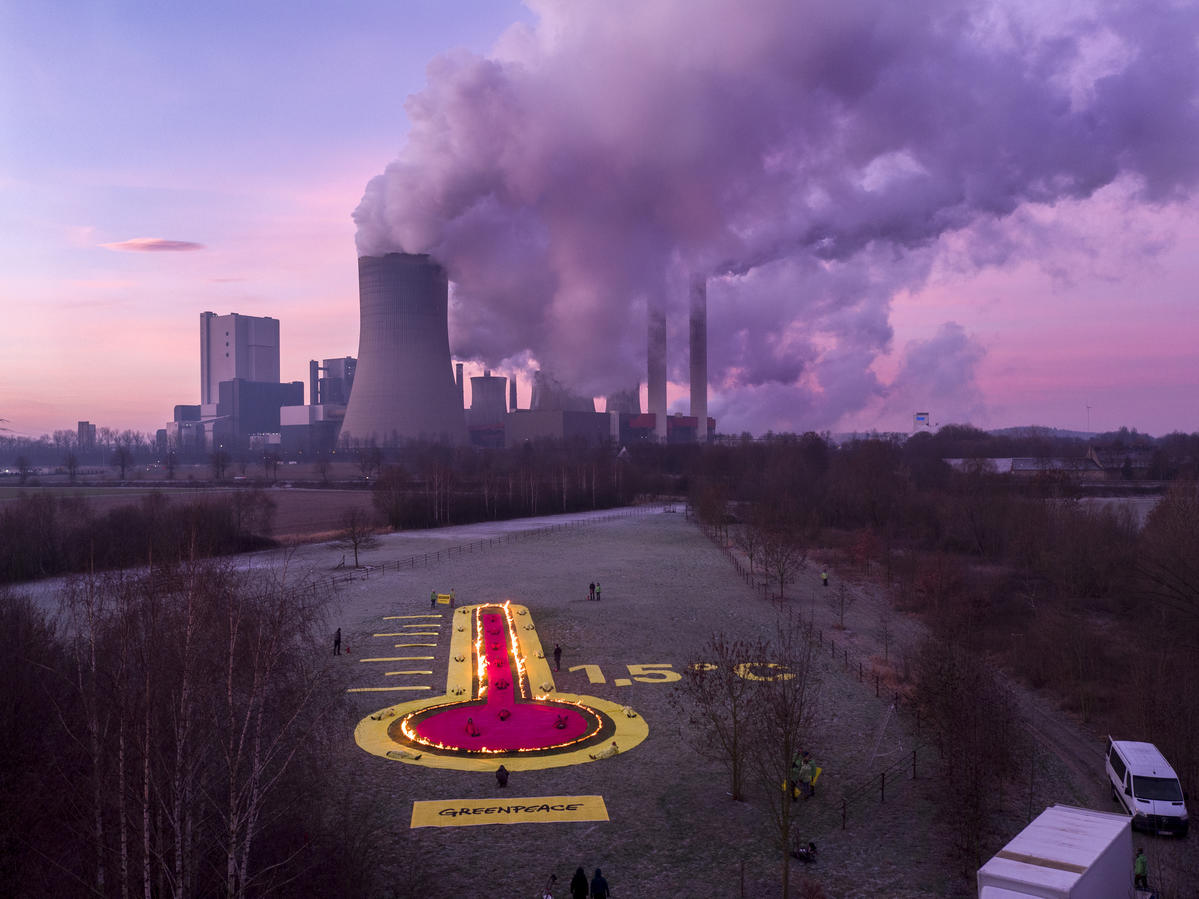
In 1822, French physicist Joseph Fourier published an “Analytical Theory of Heat” in which he mentions the greenhouse as an example of how molecules in Earth’s atmosphere absorb reflected radiation that bounces off the Earth and clouds, thus keeping Earth warm. He also mentions that “human societies could influence the temperature.”
Here, climate science intersects with feminist history. In 1856, American scientist Eunice Foote published “Affecting the Heat of the Sun’s Rays” in the American Journal of Science and Arts. However, she was not allowed to read her paper at a meeting of American scientists in Albany, New York; a male colleague had to read it for her. Foote had signed the Seneca Falls Declaration in 1848, pioneering the feminist movement with Elizabeth Cady Stanton. At the Troy Female Seminary, she had researched the influence of the atmosphere on Earth’s temperature, discovering which gases absorb heat and at what rate. She found that carbon dioxide (CO2) was a significant heating agent, and wrote: “if … at one period of time of the [Earth’s] history the air had mixed with a larger proportion than at present, an increased temperature … must have resulted.” Scientific American published the significance of her work in 1856, but until recently, Foote’s contribution to atmospheric science had been otherwise overlooked.
Following Foote’s work, Irish scientist John Tyndall explained how radiant heat is absorbed and emitted by molecules and calculated how methane and CO2 block radiation and warm Earth’s atmosphere. In the 1870s, Austrian physicist Ludwig Boltzmann pioneered the science of thermodynamics, tracking how energy is transformed in natural and mechanical systems. He worked closely with mathematician Henriette von Aigentler. Although women were not admitted to Austrian universities, Boltzmann appealed to the university of Graz so that von Aigentler could audit lectures. Together, they helped transform energy science.
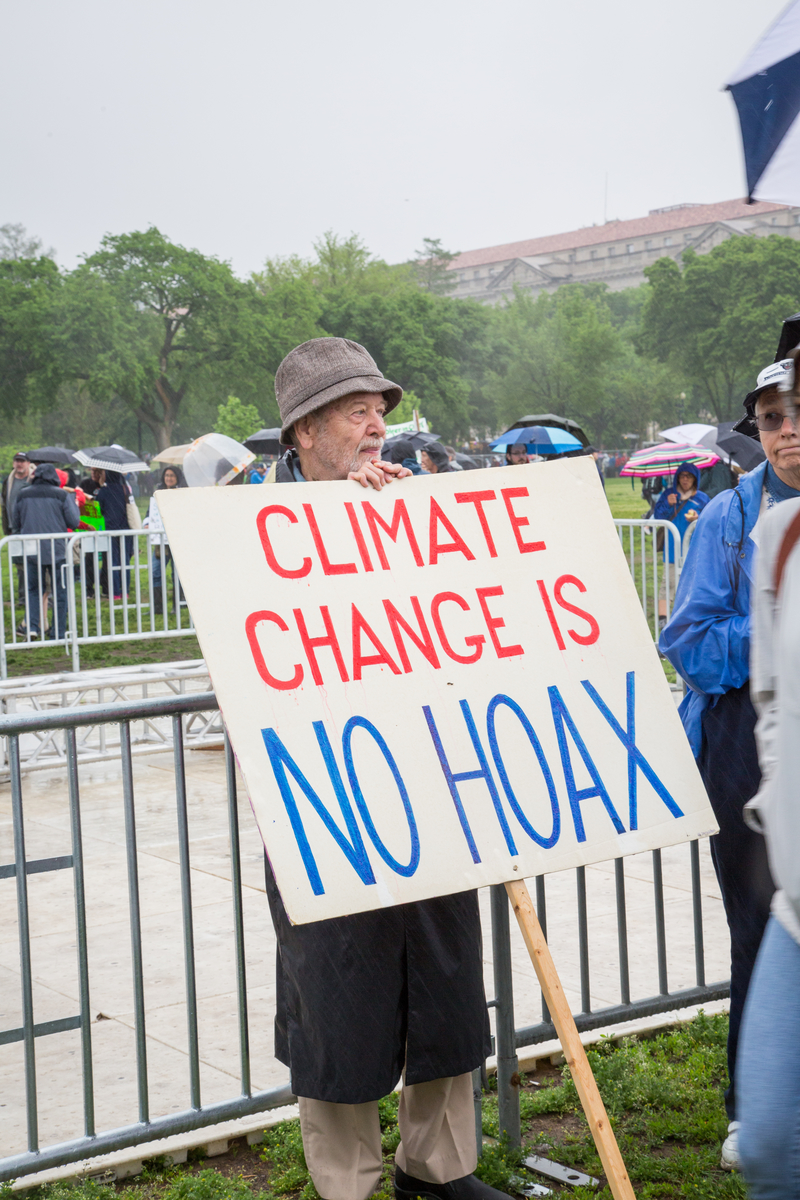
Methodically, scientists sketched out how Earth’s atmosphere regulated temperature, and they became aware that burning coal for steam engines and home heating emitted carbon to the atmosphere, where it converted naturally to CO2. In 1896, Swedish chemist Svante Arrhenius calculated that doubling atmospheric CO2 would warm Earth 5–6°C, which now appears reasonably accurate due to feedbacks. Arrhenius invoked Fourier’s Greenhouse metaphor, using the Swedish word “drivbänk” or “hothouse.”
Swedish meteorologist Nils Ekholm, a colleague of Arrhenius used the term “greenhouse” in a 1901 paper on Earth’s climate history. U.S. astronomer Frank Very wrote a paper about the “Greenhouse Theory” in 1908, and English scientist J.H. Poynting, used the term “Greenhouse effect” in a 1909 paper on the surface temperature of planets. “Greenhouse Effect” became a useful metaphor, although the method of absorbing and storing heat is slightly different in the atmosphere. By the turn of the 20th century, humanity’s science community knew perfectly well that adding carbon to our atmosphere would increase Earth’s temperature.
The oil companies knew
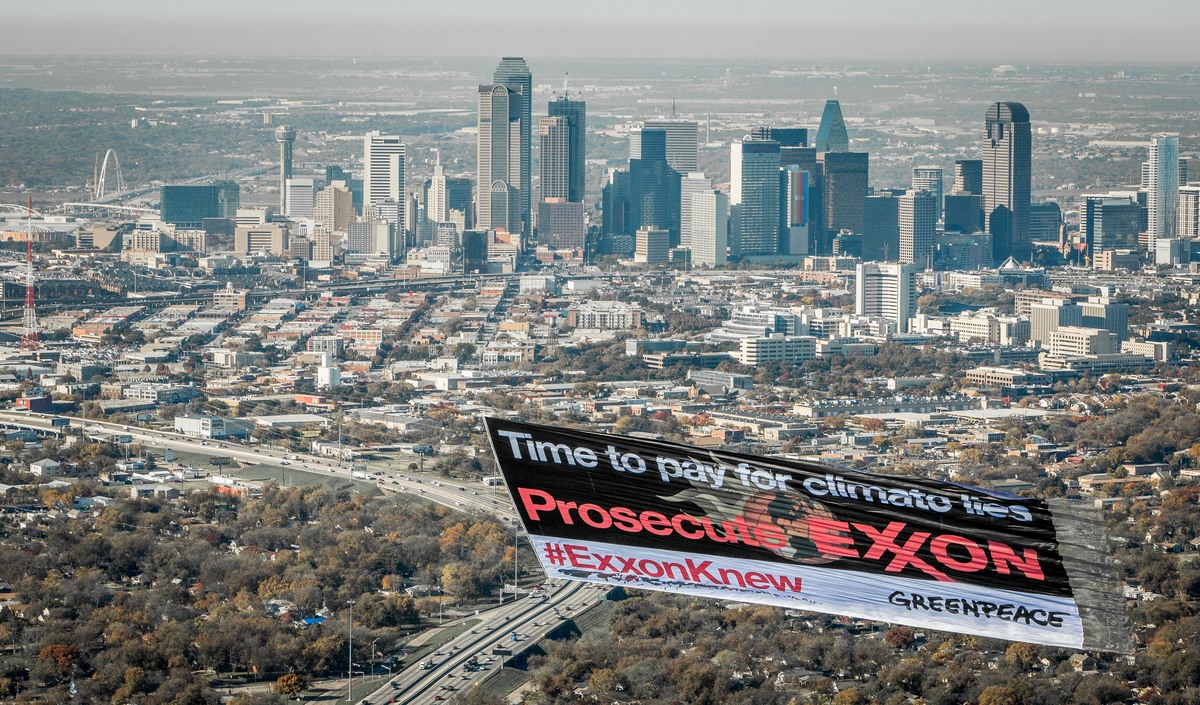
The Chinese extracted oil 2600 years ago and transported it through bamboo pipelines. The first modern oil well appeared in the US in 1859. Typically, the world’s military institutions were the first to respond. In 1912, on the eve of the First World War, Winston Churchill declared, “You have got to find the oil … purchased regularly and cheaply in peace, and with absolute certainty in war.”
The outcome of World War II was largely determined by access to oil. During the war, the US built the world’s longest pipeline – from Texas to the Atlantic – and produced about 6.3 billion barrels of oil. By comparison, Germany produced 200 million barrels, about 3% of US production. In 1941, Germany entered North Africa and Russia to reach Libyan and Caspian oil fields. German War Production Minister, Albert Speer, conceded that oil, “was a prime motive” for these invasions. But the German army literally ran out of gas, abandoning tanks in Egyptian sand and Russian mud.
After the war, the U.S., Britain, France, and Russia rushed for Middle Eastern oil fields. It was then that petroleum engineers understood that rising carbon emissions would heat Earth’s atmosphere. In 1950, the American Petroleum Institute (API) opened a research project into the global heating impact of carbon emissions for US President Lyndon Johnson’s Science Advisory Committee.
Meanwhile, in Russia, climatologist, Mikhail Budyko, published “The Heat Balance of the Earth’s Surface,” warning that growing fossil fuel use would melt polar ice, changing Earth’s reflective qualities (albedo), a system feedback that would accelerate heating. In 1960, US scientist Charles David Keeling demonstrated an unequivocal rise in atmospheric carbon dioxide.
By 1965, the American Petroleum Institute issued a final report. “There is still time to save the world’s peoples from the catastrophic consequence of pollution, but time is running out,” wrote API president Frank Ikard. “Carbon dioxide is being added to the Earth’s atmosphere by the burning of coal, oil and natural gas at such a rate that by the year 2000 the heat balance will be so modified as possibly to cause marked changes in climate beyond local or even national efforts.”
The report enumerates the ecological dangers, including “warming, melting ice caps, rise of sea level, oceanic warming, and an increased acidity of fresh waters.” Industry scientists clearly understood that “at the present time, fossil fuels are the only source of CO2 being added to the ocean-atmosphere-biosphere system,” and that “within a few short centuries, we are returning to the air a significant part of the carbon that was slowly extracted by plants … during a half billion years.” They predicted a temperature rise “between 0.6°C and 4°C.”
Even in 1982, before oil companies began denying the effects of carbon emissions, Exxon released an internal Engineering Report describing the Greenhouse Effect, and accurately predicting both CO2 build-up in the atmosphere and the resulting temperature change. Today, we are exactly where they predicted we would be, about 415 parts per million of CO2 in the atmosphere and over 1°C in heating since the industrial revolution:
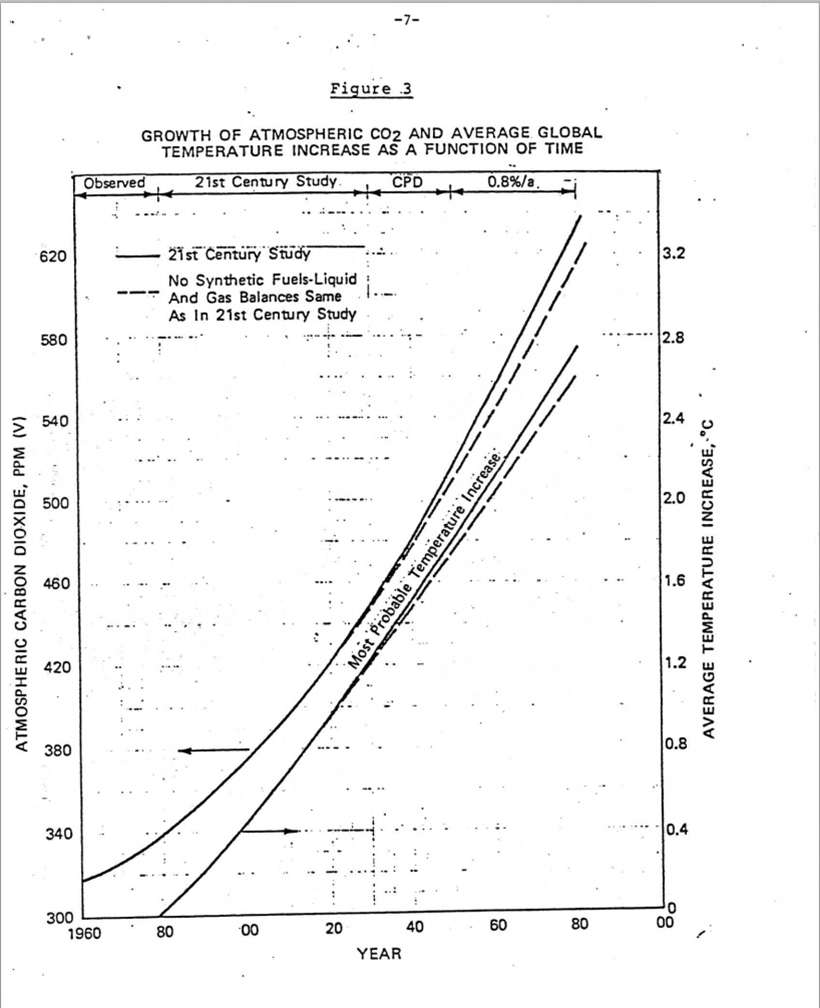
However, by the 1990s, after the U.S. congress began to hold hearings on the subject, and as environmental groups began to take action to slow carbon emissions, Exxon and other oil companies buried their engineering reports and funded a “Global Climate Coalition” to cast doubt on global heating. They used traditional advertising, fake environmental groups, and right-wing “think tanks” to create the erroneous impression that the physics and atmospheric sciences were in doubt.
The Conference Era

In 1969, NATO established a research team to address two critical ecological challenges: Acid Rain and Global Heating. In 1972, the first UN Environmental Conference, in Stockholm, discussed both of these topics. That same year, eminent atmospheric scientist John Sawyer published “Man-made Carbon Dioxide and the Greenhouse Effect” in Nature, and the Club of Rome “Limits to Growth” study warned of heating from human carbon emissions.
In 1979, the World Meteorological Organization convened the first international Climate Conference in Geneva, where the US National Research Council report estimated that a doubling of atmospheric CO2 above pre-industrial levels would heat Earth between 2°C and 3.5°C.
In 1985, the UN held a second world conference, and three years later, in 1988, world scientists convened in Toronto and warned that global heating posed “a major threat to international security.” NASA scientist James Hansen told the U.S. Congress, “We can ascribe with a high degree of confidence a cause and effect relationship between the greenhouse effect and observed warming.” That same year the UN established the Intergovernmental Panel on Climate Change (IPCC) and convened the fourth world conference, with the intention of reducing global carbon emissions.
This year’s IPCC Conference of the Parties (COP25) will be the 33rd international climate meeting in 40 years. During that time, annual human carbon emissions have more than doubled from about 5 billion tonnes of carbon in 1979 to this year’s 11 billion tonnes. Meanwhile, since some carbon sinks (oceans, forest) are filling or shrinking, the annual growth rate of carbon dioxide in the atmosphere has almost tripled, from about 1 part-per-million (ppm) per year in 1979 to now over 3 ppm every year.
After 200 years of robust science and 40 years of global conferences based on that science, we’ve seen zero progress in reducing or even stabilizing human carbon emissions. The history shows us that our challenge with global heating is not the science, but the deceits of industry, failures of governments, cowardliness of mainstream media, and the unfettered desires for ever greater comforts, consumption, speed, and short term conveniences.
References
“The Analytical Theory of Heat,” Joseph Fourier, 1822, translated by A. Freeman, Cambridge University Press. “Théorie Analytique de la Chaleur,” Paris: Chez Firmin Didot, Pere et Fils.
“On the Temperatures of the Terrestrial Sphere and Interplanetary Space,” J. Fourier, 1827, Mémoires de l’Académie Royale Des Sciences, translation by Ray Pierrehumbert.
Eunice Foote published “Circumstances affecting the Heat of the Sun’s Rays,” American Journal of Science and Arts, 1856.
Gender and Climate Change: An Introduction, ed. Irene Dankelman, Routledge/Earthscan 2010.
Eunice Foote: “This Lady Scientist Defined the Greenhouse Effect But Didn’t Get the Credit Because of Sexism, Smithsonian, Leila McNeill, 2016.
“Scientific Ladies: Experiments with Condensed Gases,” Scientific American, September 13, 1856.
“The Bakerian Lecture: On the Absorption and Radiation of Heat by Gases and Vapours, and on the Physical Connexion of Radiation, Absorption, and Conduction,” John Tyndall, Royal Society of London, Vol. 151, 1861.
Fleming, J. R., Joseph Fourier, the “greenhouse effect”, and the quest for a universal theory of terrestrial temperatures. Endeavour, 1999.
Arrhenius, S. (1896). On the Influence of Carbonic Acid in the Air upon the Temperature of the Ground. Philosophical Magazine and Journal of Science, 41(251).
Ekholm, N. (1901). On The Variations Of The Climate Of The Geological And Historical Past And Their Causes. Journal of the Royal Meteorological Society, 27(117), 1–62.
Poynting, J. H. (1907). On Prof. Lowell’s Method for Evaluating the Surface-temperatures of the Planets; with an Attempt to Represent the Effect of Day and Night on the Temperature of the Earth. Philosophical Magazine, 14(84), 749–760.
“Who first coined the term ‘Greenhouse Effect’? Steve Easterbrook, Serendipity, 2015
Very, F. W. (1908). The Greenhouse Theory and Planetary Temperatures. Philosophical Magazine, 16(93), 462–480.
“1965 President’s Science Advisory Committee Report on Atmospheric Carbon Dioxide,” The Climate File.
Mikhail Budyko, “The Heat Balance of the Earth’s Surface,” Gidrometeoizdat journal, Leningrad, 1956.
“Growth of Atmospheric CO2 and Average Global Temperature Increase as a Function of Time,” Exxon Research and Engineering, 1982, reproduced by Inside Climate News,
Leta Dickinson, “Carbon dioxide levels just hit 415 ppm. Who saw this coming? Exxon Mobil,” Grist, May 15, 2019
John Cushman, “Harvard Study Finds Exxon Misled Public about Climate Change,” Inside Climate News, 2017.
“Exxon: The Road Not Taken,” Neela Banerjee, John H. Cushman Jr., et al, Kindle, e-book, Inside Climate News, 2015.
2007, S. Sawyer: “Man-made carbon dioxide and the ‘greenhouse’ effect,” Nature 239, 23–26; 1972; reference in Neville Nicholls, “Sawyer predicted rate of warming in 1972,” Nature volume 448, 2007.
Carbon emission rates and CO2 concentration growth rates can be found and/or calculated from data found at CO2.Earth, World Resources Institute, Our World Data, and at NOAA, the US National Oceanic and Atmospheric Administration.




